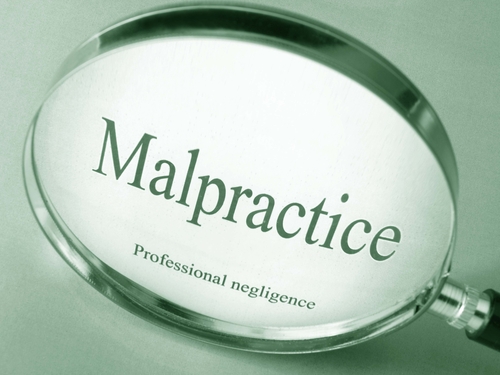What’s new in document automation for lawyers?
If the legal work your firm handles involves lots of document creation, then you would benefit from document automation software. It facilitates quick and easy document assembly by creating templates that reduce redundant data entry.
Historically, this type of software required significant time investment and sometimes even coding skills, but no more. Rapid technological advancements are setting the stage for truly automated document drafting.
I last wrote about document automation tools for lawyers three years ago, and a lot has changed since then. During those intervening years, strategic acquisitions by key players in the legal tech market have enabled several law practice management software companies to incorporate or tightly integrate enhanced document automation capabilities into their platforms.
This period also has marked the beginning of the next stage of legal technology with many companies promising to introduce generative AI into document creation and automation functions in 2024. As these shifts occur, the capabilities of document assembly software will increase, offering law firms more sophisticated tools to automate their document creation processes.
The impact of these changes is multifaceted. For starters, the enhanced document automation capabilities resulting from recent acquisitions allow for more seamless integrations of complex document drafting tasks into the daily workflows. This means tasks that once required significant manual input can now be automated more efficiently, reducing time spent on document creation and allowing legal professionals to focus on higher-value and less tedious tasks.
Additionally, the integration of generative artificial intelligence into legal software tools in the coming months represents more than simply marginal improvements; generative AI capabilities will fundamentally enhance the document assembly process. Because AI-driven tools are programmed to understand the context and nuances of legal language, documents can be generated quickly without the need for timely editing and revision. This development will significantly reduce the learning curve as well as the tedious manual input traditionally required by document automation software.
Choosing document automation software
Below, we’ll examine many of document automation software’s current offerings and capabilities. The tools covered are not all-inclusive, and there are others on the market. The goal of this update is to provide law firm decision-makers with the knowledge needed to make informed decisions about the software tools that will best meet the needs of their firms in this changing legal tech landscape.
Notably, many of the companies discussed below have announced plans to roll out generative AI functionality into their platforms, including features to streamline document creation and automation. Some already have these features in beta, and others will implement them in the near future. So keep an eye out for updates to the platforms you choose since AI implementation will undoubtedly impact document creation and assembly.
Before diving in, it’s essential to understand that the document automation tools discussed below are cloud-based, meaning that all data will be housed on servers owned by a third party. The duty of technology competence requires you to thoroughly vet the technology provider that will be hosting and storing your data. This ethical obligation requires you to fully understand how that company will handle the data; where the servers on which the data will be stored are located; who will have access to it; and how and when it will be backed up, among other things.
With that in mind, let’s look at some cloud-based document automation tools available to law firms today. Frequently, you’ll find that these tools are built into the law practice management software system already used by your firm, but you can also use stand-alone software if you’re seeking a more robust feature set or even consider practice-area-specific tools.
Document automation options
If your firm has invested in law practice management software, there’s a good chance that document automation tools are included as part of the platform. This functionality is often included in a higher pricing tier.
For example, if your firm uses Caret law practice management software, robust document automation empowered by HotDocs is available. HotDocs was acquired by AbacusNext in November 2017, which recently rebranded as Caret. This platform offers document assembly tools for organizations and law firms of all sizes, and advanced document automation is included in the Enterprise Advance Plan, which starts at $139/user/month when billed annually.
Another example is MyCase, which was acquired by AffiniPay in 2022. In 2021, MyCase acquired Woodpecker document automation software and subsequently added those features into the MyCase law practice management platform. The advanced document automation features are available in the Advanced tier at $89/month/user when billed annually.
The practice management company Clio also offers document automation functionality resulting from its acquisition of Lawyaw in 2021. Earlier this month, Lawyaw was rebranded as Clio Drafts and is available as an add-on in Clio from the Essentials tier to the Complete tier. The Essentials tier pricing starts at $69/user/month when billed annually, and the Clio Drafts add-on is an additional cost, the amount of which is not disclosed on the website.
Many different practice-area-specific law practice management software tools include advanced document automation functionality as well. For immigration lawyers, Docketwise, which was acquired by AffiniPay in 2022, includes immigration forms and automated templates. Pricing starts at $69/month/user billed annually.
Similarly, NextChapter offers practice management software for bankruptcy lawyers that includes guided forms. Annual pricing starts at $999 per year, which includes basic forms, and a $500 add-on for access to advanced document creation and automation tools.
For personal injury lawyers, CASEpeer, which was acquired by AffiniPay in 2021, includes document automation templates for personal injury lawyers in all pricing tiers, starting with the Basic tier, which costs $69/user/month.
Specifio is software that automates patent applications. It converts pages from claims into patent application shells. Pricing starts at $799/month for solo lawyers.
Another example is WealthCounsel, which provides software for estate planning and elder law attorneys. It was acquired by LEAP legal software in 2022. The Essential and Elder Law Professional membership tiers include the Wealth DocX core comprehensive document drafting tool. Pricing is not available on the website.
Last but not least, there are also stand-alone document assembly products. If you’re not already using software that has advanced document automation functionality available, they might be a good choice for your firm.
Knackly is one example. Using Knackly, you can create online client intake forms and automate other types of document creation. Knackly pricing starts at $1,000 annually for up to four users.
Another stand-alone option is Gavel, which was previously known as Documate until a rebrand occurred in 2023. Pricing starts with the Lite tier at $83/month for a single user. If more than one person in your firm will need access, you’ll need to upgrade to the Pro plan, which includes two Builder seats and three organizational user seats and costs $290/month.
The sky’s the limit
We’re in the midst of a rapid technology evolution that is resulting in more powerful document automation software. The addition of advanced document automation features to the legal practice management platforms your firm already has in place due to acquisitions and the eventual availability of generative AI technology into legal software tools represent significant milestones. These advancements have expanded the capabilities of existing tools and set a new standard for efficiency and effectiveness in the creation and management of legal documents.
These tools offer promising solutions to streamline operations and enhance productivity, so legal professionals must maintain technology competence by staying on top of these developments. The reason? Practitioners who effectively leverage the latest in legal document automation technology will increasingly distinguish their practices from the rest and stand out in today’s increasingly competitive legal landscape.
Nicole Black is a Rochester, New York-based attorney, author and journalist, and she is senior director of subject matter expertise and external education at MyCase, a company that offers legal practice management software for small firms. She is the nationally recognized author of Cloud Computing for Lawyers and is co-author of Social Media for Lawyers: The Next Frontier, both published by the American Bar Association. She writes regular columns for ABAJournal.com and Above the Law, has authored hundreds of articles for other publications, and regularly speaks at conferences regarding the intersection of law and emerging technologies. Follow her on X (formerly Twitter) @nikiblack, or she can be reached at [email protected].
This column reflects the opinions of the author and not necessarily the views of the ABA Journal—or the American Bar Association.






